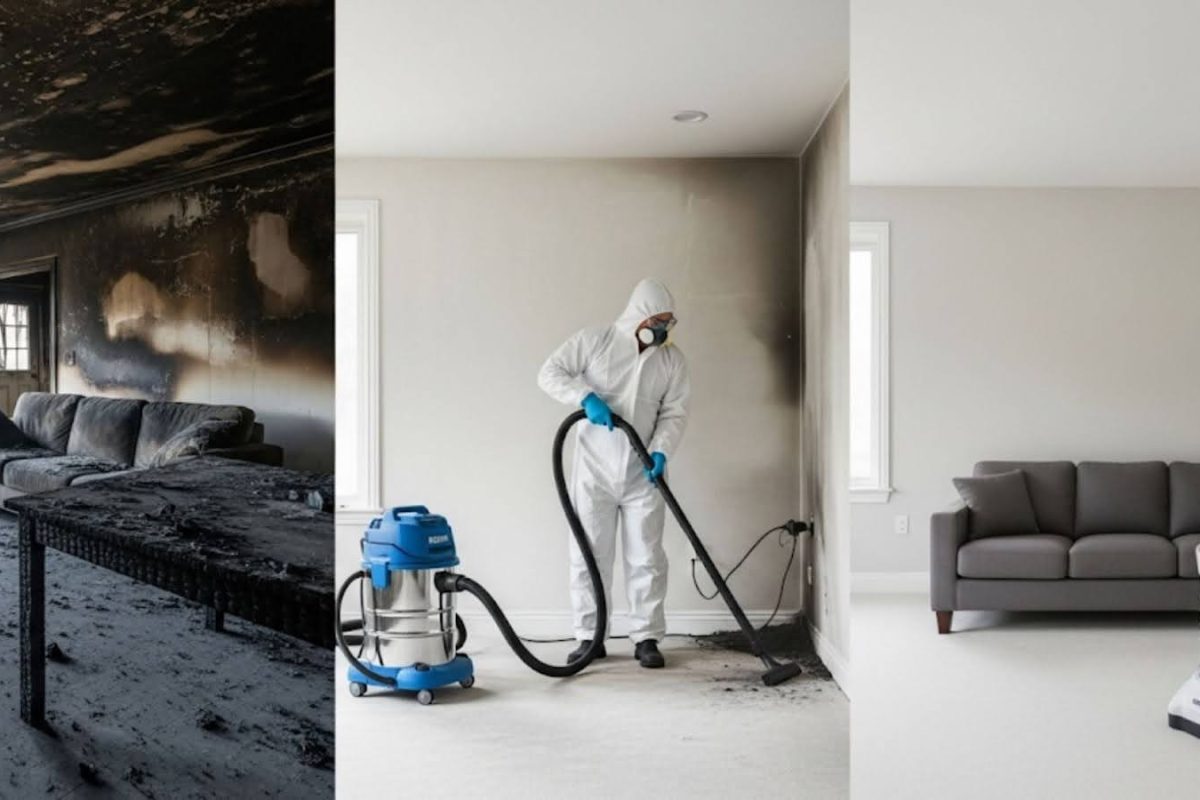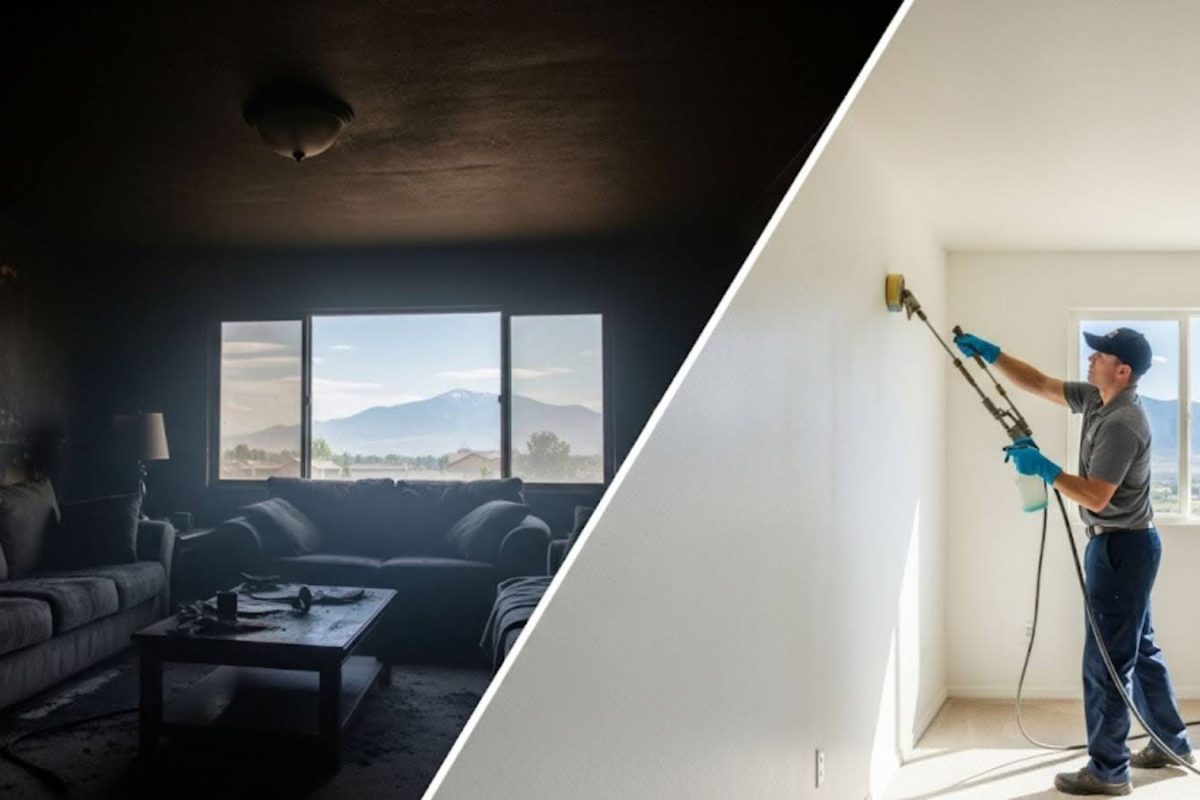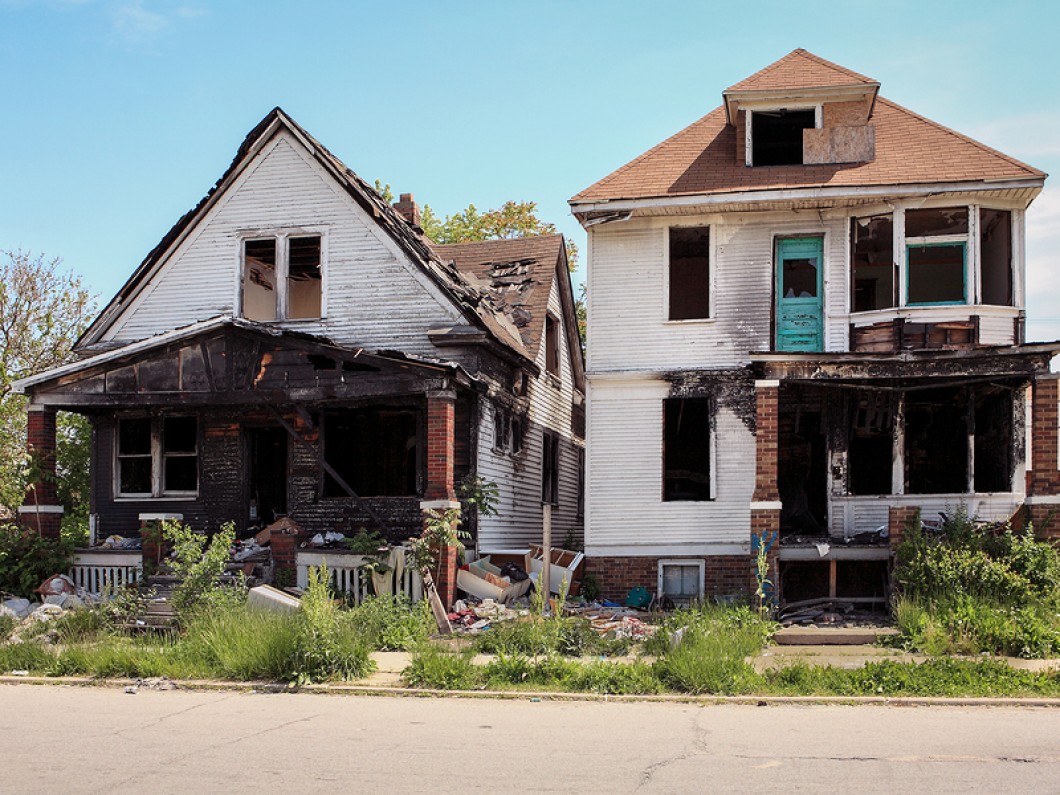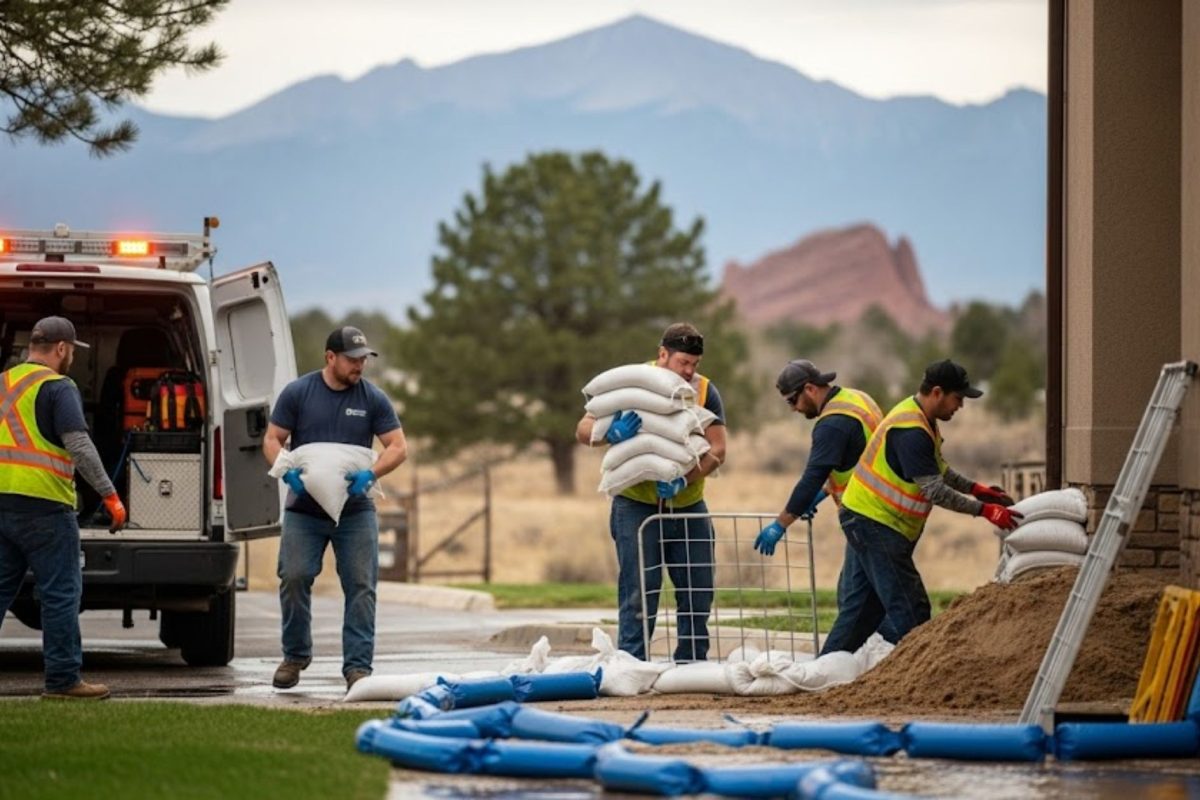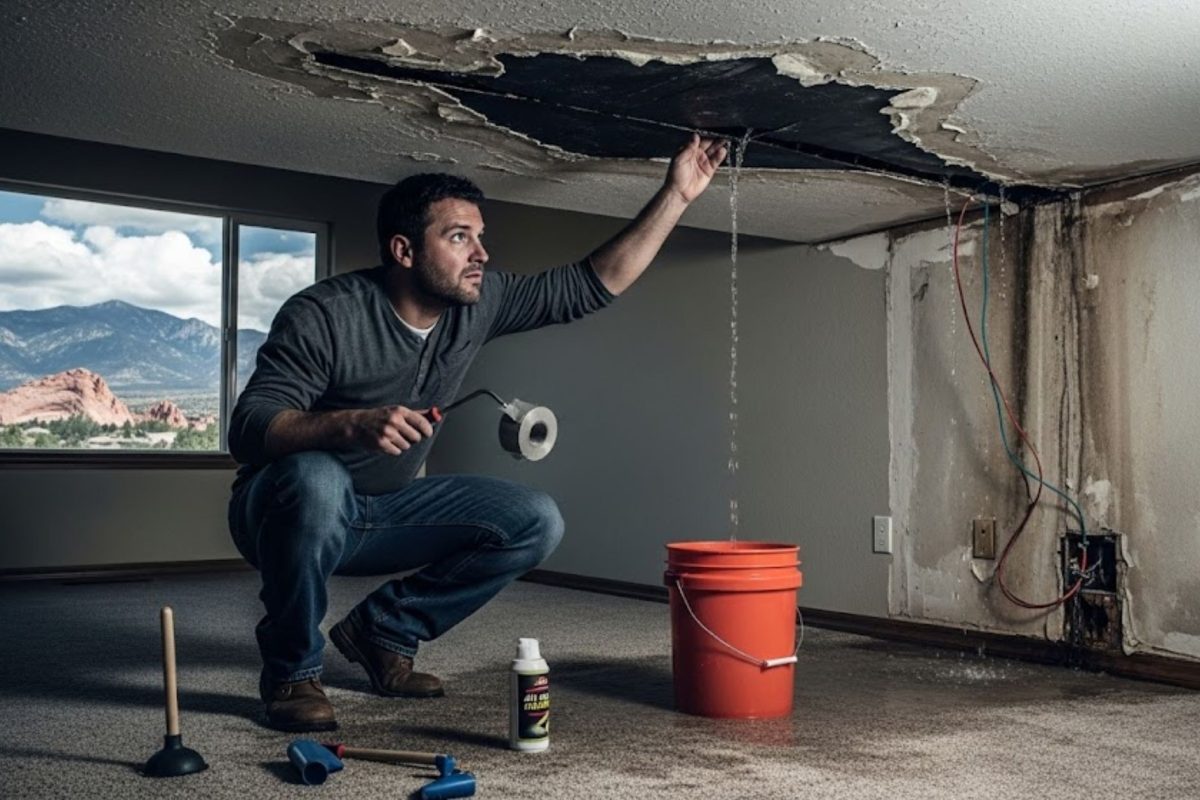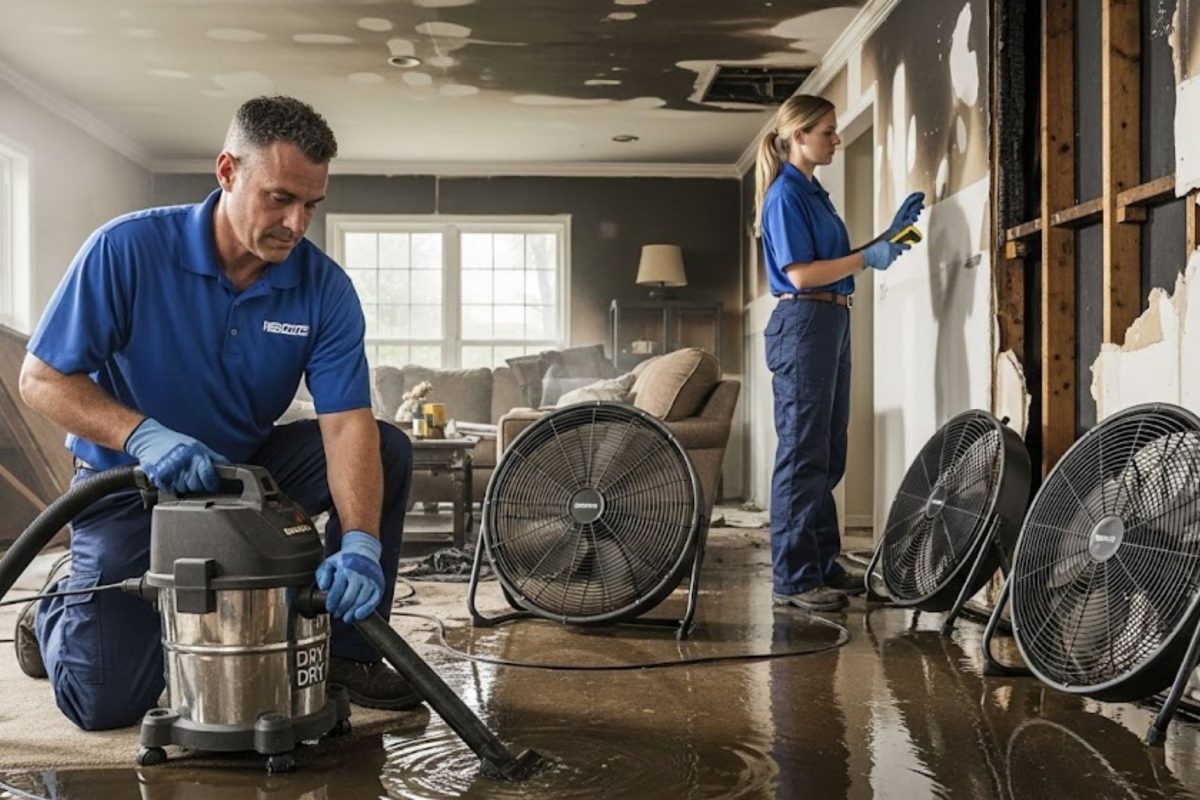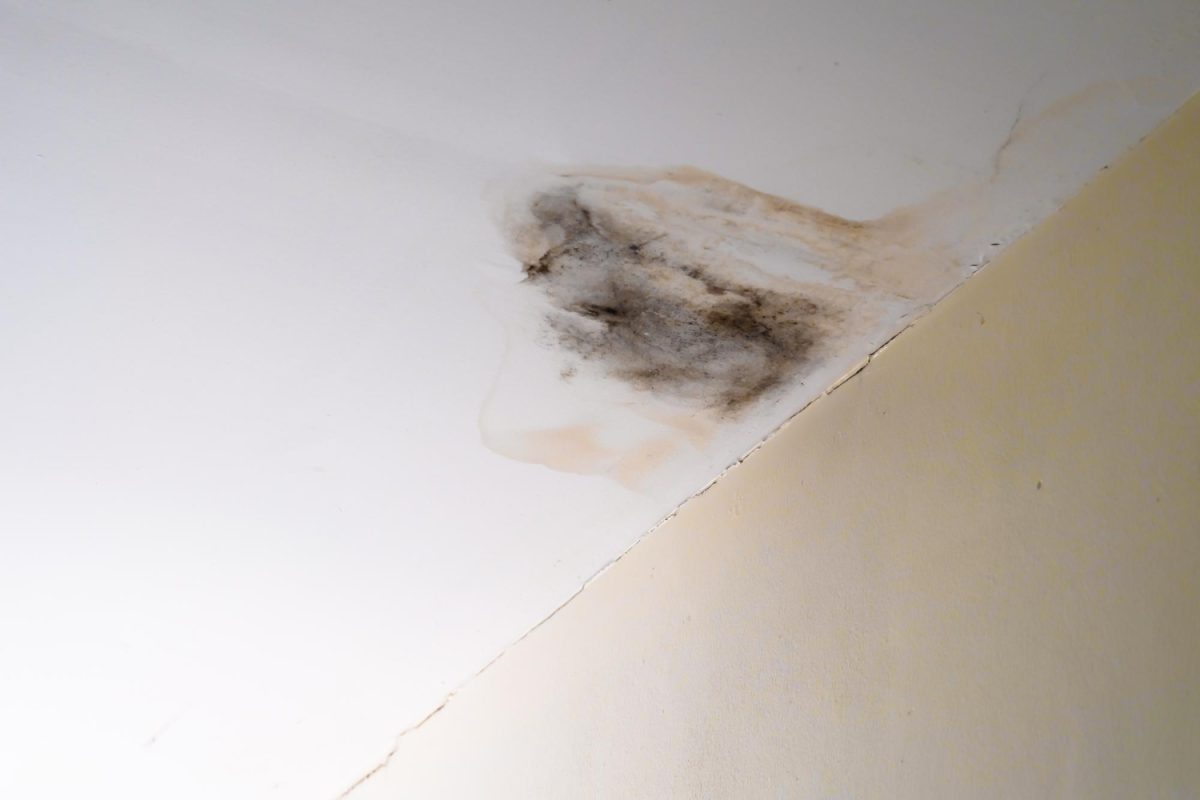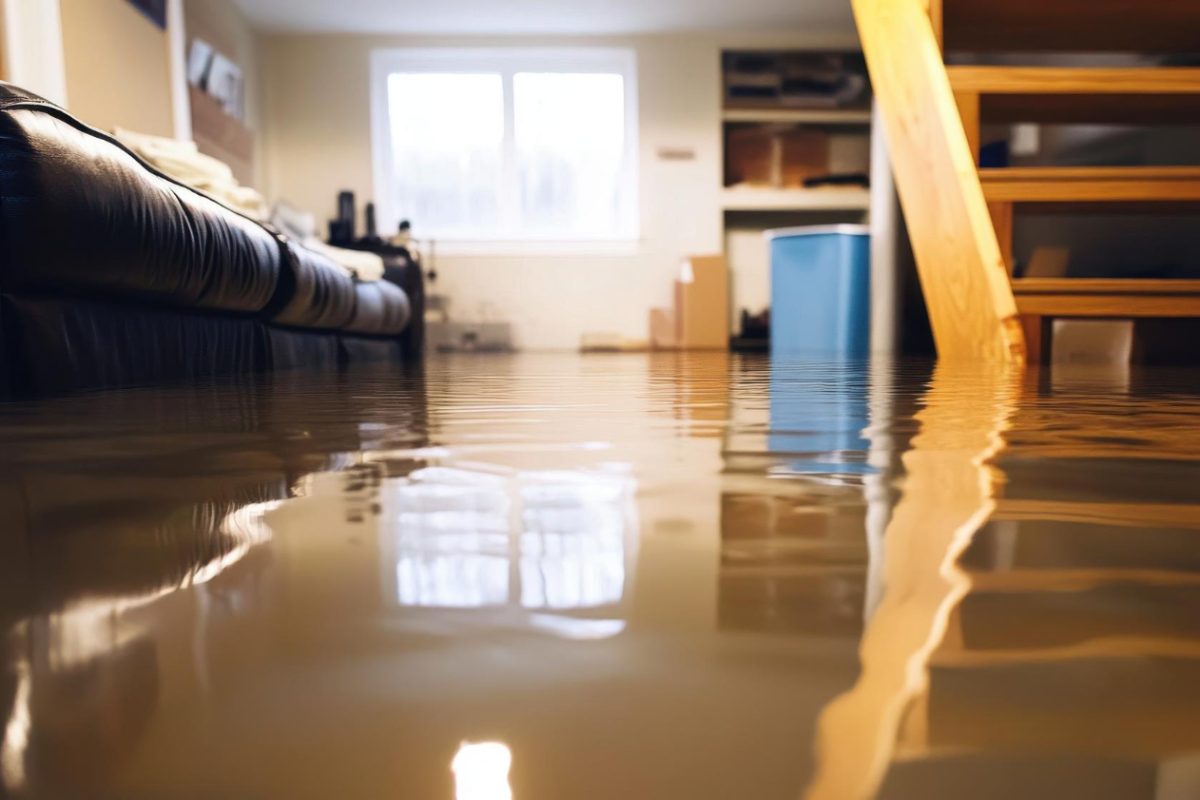In the aftermath of a fire, homeowners often confront pervasive soot, stubborn odours, and structural concerns that demand professional intervention. Smoke Damage Repair Colorado Springs is critical to restoring indoor air quality, preserving personal belongings, and safeguarding the property’s integrity. A comprehensive repair process not only removes visible residues but also neutralizes microscopic particles that linger in wall cavities, HVAC systems, and fabrics. Engaging experts ensures that every phase—from initial assessment to final deodorization—aligns with industry standards and local codes to guarantee a thorough, lasting recovery.
Recovering from smoke damage involves more than surface cleaning; it requires a systematic approach that addresses safety, containment, and cosmetic restoration in sequence. Professional teams deploy advanced tools such as thermal foggers, negative air machines, and HEPA vacuums to eliminate soot and odours at the molecular level. Licensed general contractors coordinate structural repairs while environmental specialists oversee toxic residue removal and air quality validation. Homeowners benefit from clear communication, documented progress reports, and a definitive timeline that transforms chaos into clarity throughout the restoration journey.
How Does Smoke Damage Repair Colorado Springs Work?
Smoke Damage Repair Colorado Springs relies on a multi‐phase methodology designed to secure the property, assess damage, and methodically cleanse affected areas. The process begins with a detailed inspection to catalog smoke infiltration, soot deposits, and compromised materials. Safety protocols are immediately implemented, including isolating damaged zones, shutting off HVAC systems, and establishing negative air pressure to prevent cross‐contamination. From there, technicians develop a customized action plan that aligns with best practices set by the Institute of Inspection, Cleaning and Restoration Certification (IICRC).
Following inspection, teams secure the site by boarding windows, covering vents, and sealing off unaffected areas to contain smoke particles. Detailed photo and video documentation accompany every step, creating a transparent record for insurance claims and homeowner peace of mind. Technicians then mobilize specialized equipment—polarity vacuums for dry soot, chemical sponges for wet residues, and encapsulating agents to lock in odour molecules. This targeted approach ensures that each surface, from drywall to upholstery, receives the precise treatment required for complete restoration.
Assessing Smoke Damage
The initial assessment phase evaluates the type and severity of smoke contamination, distinguishing between dry smoke from paper combustion and wet smoke from synthetic materials. Dry smoke typically leaves a fine, powdery residue that infiltrates porous surfaces, whereas wet smoke creates sticky, tar‐like deposits that adhere to walls and ceilings. Technicians conduct a room‐by‐room survey, identifying hidden smoke pockets in attics, basements, and ductwork. Thorough moisture readings and surface pH tests guide the selection of cleaning agents and determine whether structural replacement is necessary.
Concurrently, specialists inventory personal belongings, tagging salvageable items for off‐site cleaning and storing irreparable materials for discard. Furniture, textiles, and electronics receive preliminary cleaning treatments to prevent permanent staining. At this stage, homeowners receive a comprehensive damage report outlining remediation steps, cost estimates, and an anticipated project timeline. Transparent communication ensures that expectations align with actual remediation scope and helps avoid surprises once work commences.
Containment and Safety Measures
Once damage is assessed, containment measures establish a secure perimeter around affected zones to halt soot migration. Technicians deploy polyethylene sheeting and zipper doors to isolate workspaces, while negative air machines maintain a slight vacuum that draws airborne particles away from clean areas. Personal protective equipment—full‐face respirators, Tyvek suits, and nitrile gloves—safeguards crew members from hazardous residues. All airborne particulates are filtered through HEPA units before exhaust to guarantee external air remains uncontaminated.
Safety extends to structural stability as well. Licensed general contractors reinforce weakened supports, board up compromised windows, and tarps open roofing areas to protect against weather intrusion. Environmental specialists monitor indoor air quality daily, using particle counters and VOC sensors to verify that containment remains effective. This meticulous approach not only protects homeowner health but also streamlines subsequent cleaning by ensuring contaminants remain confined.
Debris Removal and Soot Treatment
After securing the site, remediation teams remove charred debris and non‐salvageable materials to access underlying structures. Wood beams, drywall sections, and insulation that exhibit irreversible damage are safely dismantled and disposed of following local regulations. Certified technicians then apply dry sponges and specialized vacuums to lift fine soot particles from ceilings, walls, and horizontal surfaces. For sensitive electronics and delicate fixtures, ultrasonic cleaning and targeted solvent applications dislodge microscopic residues without causing corrosion.
In parallel, teams perform deodorization tests using small thermal fog machines to identify persistent odours. When conventional sponges prove ineffective, deodorant pellets and ozone generators break down residual odour molecules within hard‐to‐reach cavities. Each treatment passes through quality checkpoints that include visual inspections, odour detection panels, and post‐treatment air sampling. These rigorous steps lay the groundwork for a full renovation, turning smoke‐impacted areas back into healthy, livable spaces.
Deep Cleaning and Deodorization
Deep cleaning targets textiles, upholstery, and carpets with industrial steam cleaning units and enzyme‐based detergents capable of neutralizing fire‐derived odours. Fabrics are pre‐sprayed with odor counteractants before entering high‐temperature washers that lift ingrained soot. Non‐porous surfaces such as tile, glass, and metal receive alkaline or acidic washes based on their composition, ensuring that no residue remains to discolor future coatings or finishes. Technicians conclude this phase by using multi‐stage air scrubbers to filter out any suspended particles, restoring optimal indoor air circulation.
Simultaneously, HVAC systems undergo complete disassembly, duct cleaning, and filter replacement to eliminate smoke contaminants from air handling units. The combination of mechanical cleaning and chemical treatments prevents odours from recirculating once the system is reactivated. Continuous monitoring throughout this phase assures homeowners that odour elimination is permanent, not just temporarily masked. By the end of deep cleaning, customer satisfaction teams conduct walkthroughs to validate that each room meets client standards and local code requirements.
Why Hiring Licensed General Contractors Matters for Smoke Damage Repair
Engaging licensed general contractors ensures structural integrity issues are addressed alongside cosmetic smoke treatments. A general contractor oversees all subcontractors—electrical, plumbing, and carpentry—to coordinate seamless progress from demolition through rebuild. This central management reduces delays and miscommunications, ensuring that smoke remediation, structural repairs, and final finishes occur in logical sequence. Homeowners gain the confidence that every permit is secured and every local building ordinance is met.
Licensed contractors also carry liability insurance and workers’ compensation coverage, shifting risk from homeowners to professionals. Should unexpected complications arise—such as hidden water damage or unseen structural compromise—these experts adapt project scope without jeopardizing safety or compliance. Their extensive network of vetted vendors and subcontractors ensures quality materials and workmanship, culminating in a finish that restores both function and aesthetic appeal to smoke-impacted properties.
What Role Do Local Restoration Specialists Play in Smoke Damage Repair?
Local restoration specialists bring geographic insight that national chains often overlook. Familiarity with Colorado Springs’s climate—its fluctuating humidity, seasonal dust storms, and monsoon rains—guides decisions about drying times, mold prevention, and exterior protections. These experts maintain relationships with regional suppliers, ensuring prompt delivery of materials like moisture‐resistant board, sealants, and local paint matches that withstand altitude‐driven wear. Community ties also foster responsive scheduling, reducing lead times during peak fire season or sudden weather events.
Local teams excel in navigating municipal regulations and coordinating with first responders, environmental agencies, and insurance adjusters. They understand permitting timelines at the El Paso County building division and have established reporting protocols for local inspectors. Homeowners benefit from hands-on project managers who can make same-day site visits, conduct neighborhood safety briefings, and adapt remediation plans to real-time weather or logistical changes. This localized expertise accelerates recovery and yields a restoration that aligns with regional standards and homeowner expectations.
In many Colorado Springs neighborhoods, Smoke Damage Repair Colorado Springs experts must adapt to home designs ranging from historic Victorian cottages to modern mountain-style estates. Technicians tailor cleaning agents and sealants to wood species, masonry types, and architectural finishes unique to each property. By integrating local knowledge with IICRC-certified processes, these specialists deliver results that honor both structural heritage and contemporary design requirements.
Key Techniques Used by Colorado Springs Smoke Repair Experts
Colorado Springs smoke repair experts deploy a suite of advanced remediation methods to tackle diverse fire scenarios. Thermal fogging introduces heated deodorant solution particles into hidden voids, chemically neutralizing odour molecules deep within wall cavities. High-pressure air wash systems dislodge stubborn soot from roof trusses and attic insulation, while granulated activated carbon filters strip VOCs from the air. Strategically placed ozone generators further oxidize residual odour compounds, ensuring a comprehensive purge of smoke by-products.
In urgent situations, emergency response crews are on standby 24/7 to mobilize negative air machines, setting up containment barriers within hours of the call. These negative air systems maintain air pressure differentials that prevent smoke particulates from migrating during debris removal and reconstruction. Each project phase is overseen by a project manager who logs air quality metrics, documents cleaning efficacy, and prepares detailed reports for homeowner records and insurer review. To schedule a consultation, homeowners can simply Contact us to arrange a rapid, on-site inspection.
Comparing Leading Smoke Damage Repair Services in Colorado Springs
Before selecting a provider, homeowners often weigh factors such as response time, certification, and scope of services. The table below compares Top Gun Premier to two prominent competitors in the Colorado Springs market, highlighting key differentiators:
| Feature | Top Gun Premier |
| 24/7 Emergency Response | Yes |
| IICRC Certification | Fire & Smoke, WRT, ASD |
| Licensed General Contractor | In-House |
| Local Restoration Specialists | Dedicated Team |
| Advanced Deodorization Tools | Thermal Fog & Ozone |
| Insurance Claim Coordination | Full-Service Liaison |
| Structural Repair & Rebuild | Included |
Investing in an experienced smoke repair provider can mean the difference between lingering odours and a fully restored home. The table above illustrates how the breadth of certifications, in-house contracting, and insurance assistance vary among service providers. Homeowners should review each element carefully, ensuring their chosen team aligns with their timeline, budget, and quality expectations.
How to Prevent Future Smoke Damage?
Proactive measures can significantly reduce the impact of smoke events, whether caused by wildfires, kitchen accidents, or mechanical malfunctions. Installing air purifiers with true HEPA filters and carbon pre-filters helps capture fine particles before they settle on surfaces. Regular HVAC maintenance, including filter changes every three months and annual duct cleanings, prevents the accumulation of dust and debris that can fuel smoke spread during minor fires.
Implementing fire-resistant landscaping further protects homes from external smoke infiltration. Using stone mulch, non-combustible fencing, and fire-rated siding minimizes embers’ ability to reach roofing, soffits, and vents. Homeowners should also create defensible space by clearing flammable vegetation at least 30 feet from the structure. These preventive strategies complement professional restoration efforts by reducing the likelihood and severity of potential smoke damage events.
Building Material Selection
When renovating or constructing, choosing materials with built-in smoke resistance can ease future cleanups. Cement board siding, mineral wool insulation, and non-woven wall coverings resist odour absorption better than traditional alternatives. Low-VOC paints and sealants also exhibit superior moisture and odour blocking properties, limiting smoke’s ability to penetrate interior finishes. Collaborating with a licensed general contractor during material selection ensures compatibility with smoke remediation protocols and environmental regulations.
What to Expect When Working with Colorado Springs Smoke Repair Experts
From the first phone call to the final walkthrough, transparency and clear communication form the foundation of a positive restoration experience. Homeowners receive a detailed service agreement that outlines scope of work, estimated timeline, safety protocols, and payment milestones. Project managers schedule daily briefings to discuss progress, adapt to any unforeseen issues, and confirm that each phase aligns with the homeowner’s expectations.
During reconstruction, only licensed tradespeople handle electrical, HVAC, and structural repairs, providing separate warranties for workmanship. Before project closeout, an independent third party may perform air quality testing to validate the absence of particulate matter and odour compounds. Final deliverables include a comprehensive completion report, digital photographs, and a homeowner guide detailing preventive maintenance steps. This ensures that restored properties not only look pristine but also remain healthy long after the remediation team departs.
Insurance Claim Coordination for Smoke Damage Repair
Navigating insurance claims after a fire can overwhelm homeowners already coping with stress and displacement. Smoke repair experts streamline the process by generating detailed estimates that adhere to Xactimate standards and include line-item costs for every remediation phase. These professionals liaise directly with adjusters, scheduling on-site inspections and supplement requests as needed. Clear documentation—photos, moisture readings, and odour testing logs—fortifies the homeowner’s position, accelerating claim approvals and minimizing out-of-pocket expenses.
Some insurance policies differentiate between fire damage and smoke damage coverage, making it crucial to understand policy language. Restoration specialists provide guidance on supplemental claims for hidden smoke infiltration, additional demolition, or extended deodorization treatments. Their expertise ensures that no necessary step is excluded from claim submissions, reducing the likelihood of coverage denials. Ultimately, homeowners benefit from a seamless integration of remediation services and insurance advocacy, allowing them to focus on moving forward.
Frequently Asked Questions
How can homeowners reduce smoke odors before professionals arrive?
Homeowners should ventilate the space immediately by opening windows and doors if weather permits, fostering cross-breeze airflow that diminishes lingering odours. Placing bowls of white vinegar or activated charcoal around the perimeter can help absorb smoke molecules temporarily. Avoid rubbing walls or furniture, as this spreads soot particles and embeds them deeper into surfaces. If safe, changing furnace filters and running portable air purifiers with true HEPA filters further reduces airborne contaminants until professionals arrive.
What certification do smoke damage repair experts in Colorado Springs hold?
Reputable smoke remediation teams in Colorado Springs often carry IICRC certifications including Fire and Smoke Restoration (FSRT), Water Damage Restoration (WRT), and Applied Structural Drying (ASD). Additionally, they may maintain EPA Lead-Safe credentials for homes built before 1978 and hold local contractor licenses required by El Paso County. These certifications ensure strict adherence to best practices, safety protocols, and continual education on emerging remediation technologies. Homeowners should verify credentials before signing any service agreement.
Is smoke damage covered by homeowner insurance policies?
Most homeowner insurance policies cover smoke damage resulting from sudden, accidental events, such as kitchen fires or lightning strikes. However, coverage specifics vary—some carriers limit coverage for smoke from external wildfires or mandated controlled burns. Policyholders should review their endorsements for sub-limits, deductibles, and additional living expense allowances if temporary relocation is necessary. Restoration experts can assist by providing detailed documentation and supplemental claim support to clarify coverage gaps.
Can smoke damage lead to mold growth?
Smoke damage often coincides with excessive moisture introduced during firefighting and cleanup procedures. When protein-based soot settles on damp materials, it creates an ideal substrate for mold spores to colonize within 24 to 48 hours. Effective smoke remediation teams integrate moisture control measures—dehumidifiers, air movers, and moisture meters—to ensure materials dry below mold growth thresholds. Early intervention in smoke and water removal prevents secondary mold issues and preserves indoor air quality.
What should be included in a smoke damage repair estimate?
A comprehensive smoke damage repair estimate outlines itemized costs for inspection, containment setup, debris removal, soot cleaning, deodorization, structural repairs, and final air testing. It also specifies equipment rental fees, labor rates, and material charges for sealants, encapsulants, and replacement drywall or trim. Clear timelines, payment schedules, and warranty terms for both remediation and reconstruction services should be detailed. Homeowners should confirm that the estimate aligns with insurer requirements and includes allowances for unforeseen scope changes.
Final Words
In the competitive landscape of fire and smoke restoration, Top Gun Premier distinguishes itself through a blend of local expertise, licensed contracting, and cutting-edge remediation techniques. Smoke Damage Repair Colorado Springs projects entrusted to their team benefit from rapid mobilization, transparent communication, and rigorous quality assurance at every stage. From emergency board-up to final odour elimination, their all-in-house approach reduces coordination complexity and accelerates return to normalcy.
Choosing a restoration partner is about more than just equipment and certifications—it’s about trust, reliability, and demonstrable results. Homeowners in Colorado Springs can rest assured that Top Gun Premier stands ready to restore their property to pre-loss condition with professionalism, precision, and genuine care for long-term health. To schedule a consultation or learn more about tailored remediation plans, contact us today and experience the Top Gun Premier difference firsthand.


